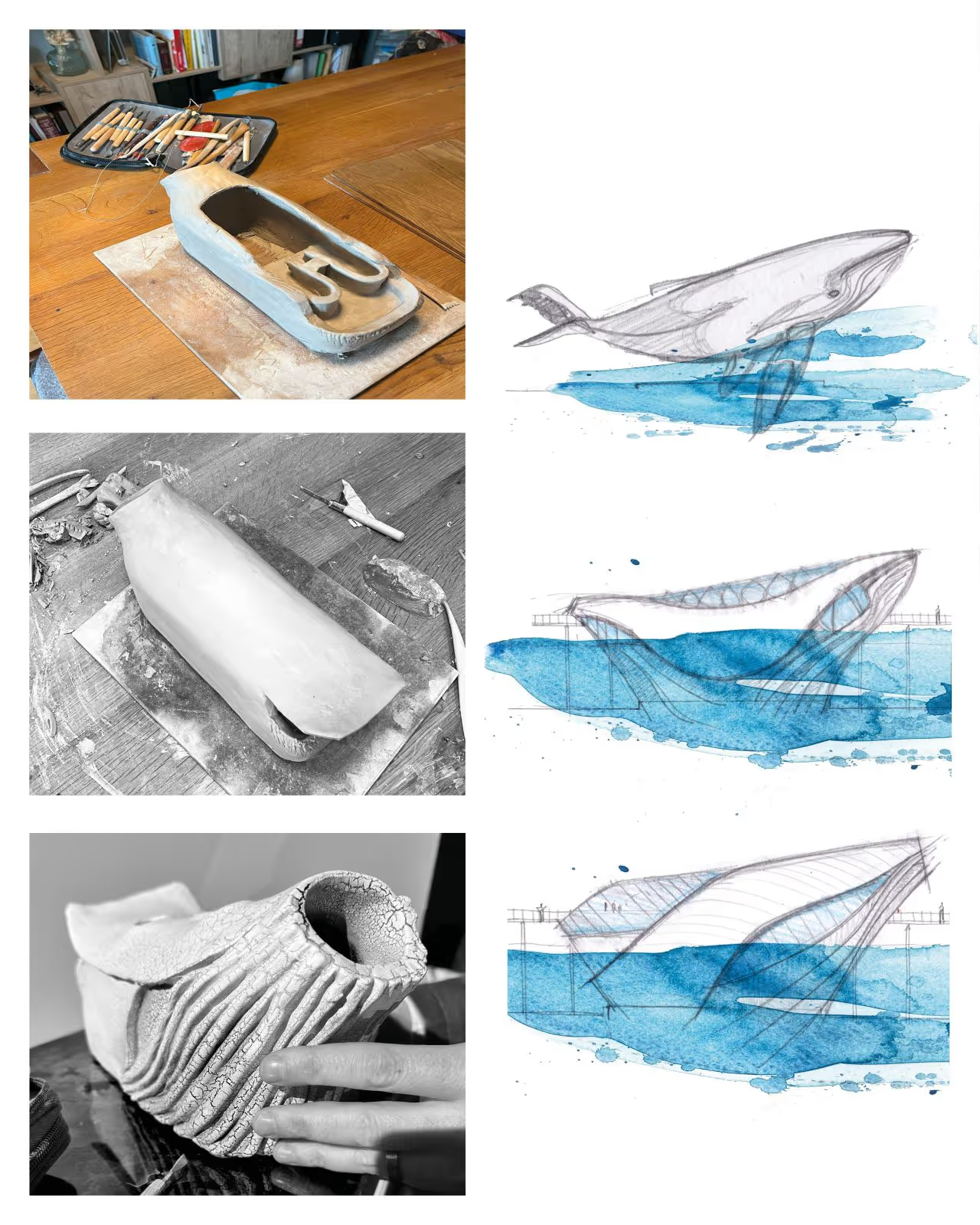July 30, 2025

The lines between architecture and art, especially within the design phase, can become blurred. In these early moments, experimentation, intuition, and abstract thinking guide the project just as much as technical planning.
Shown is one of the early porcelain models of ‘The Cetacean’, created by Richard in his home studio, demonstrating the versatility and blending of multiple art styles to execute a concept—a view behind the curtain of the multi-skilled operation here at BACA.
The cracked glaze finish shown on the model took extensive experimentation to perfect. As with pottery comes the unpredictable nature of the final form, which reveals itself only after firing, adding an element of surprise throughout the creative process.
Sitting above the water, the Cetacean is an interpretation of a whale, raising its head over Geographe Bay in recognition of the bay's importance in the migration patterns of humpback whales. Underneath will house the world’s largest natural marine observatory.
The form of the Cetacean is inspired by a manoeuvre that whale watchers call a ‘spy hop’, where inquisitive whales raise their heads and eyes to breach the surface of the water to observe us instead. Plus, the textured feature of the Cetacean is reflective of a whale’s ventral pleats, a large section of skin beneath the mouth where barnacles typically attach.
Both the Cetacean’s architectural form and its ceramic model celebrate the beauty found within imperfections, from the barnacles on a whale’s skin to the cracks revealed in glazed porcelain.